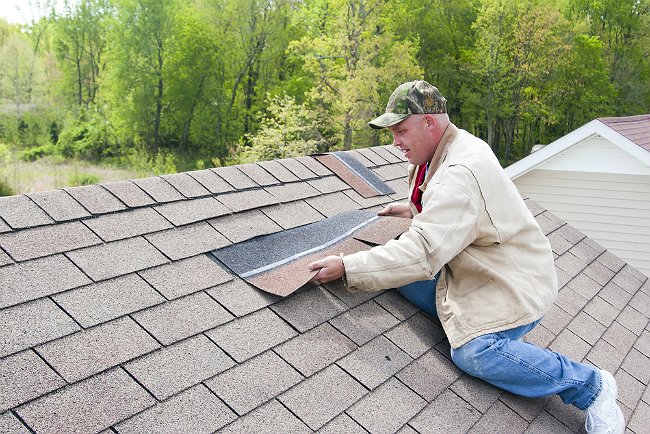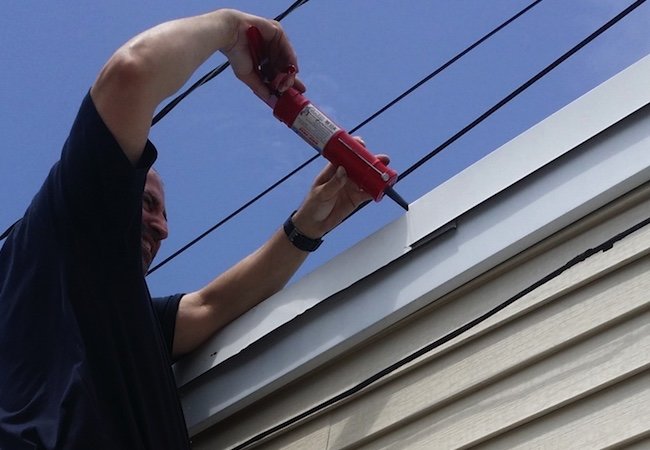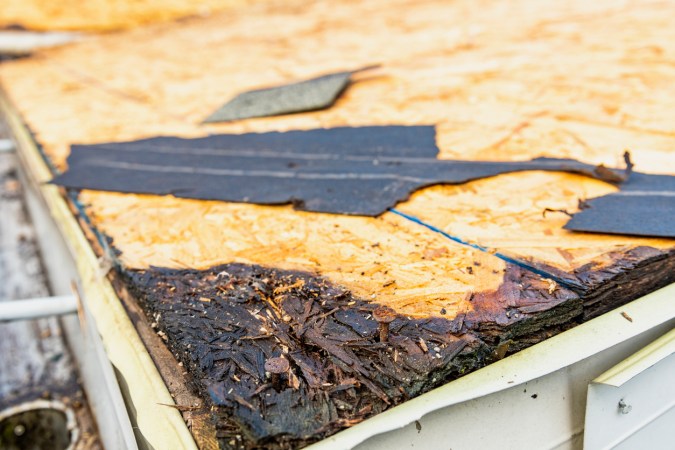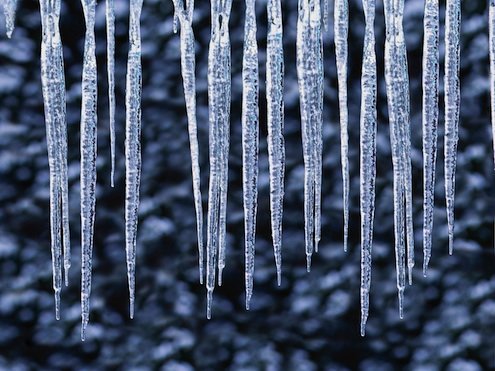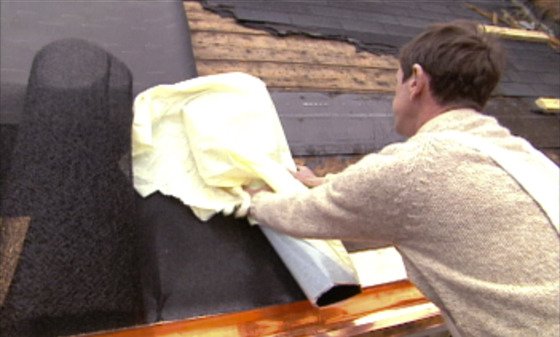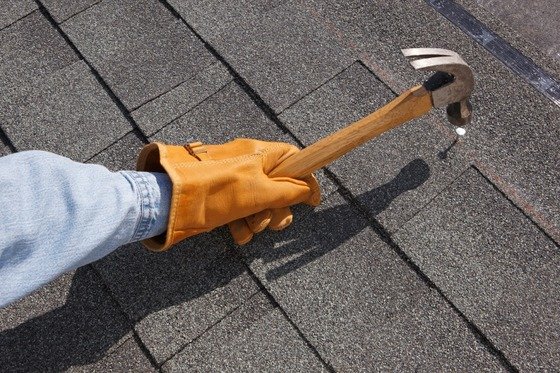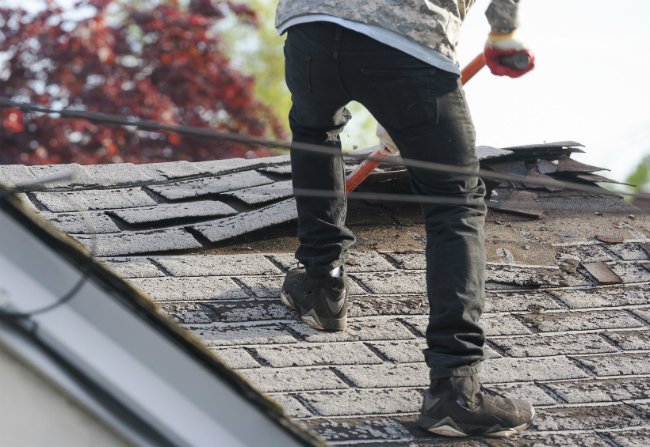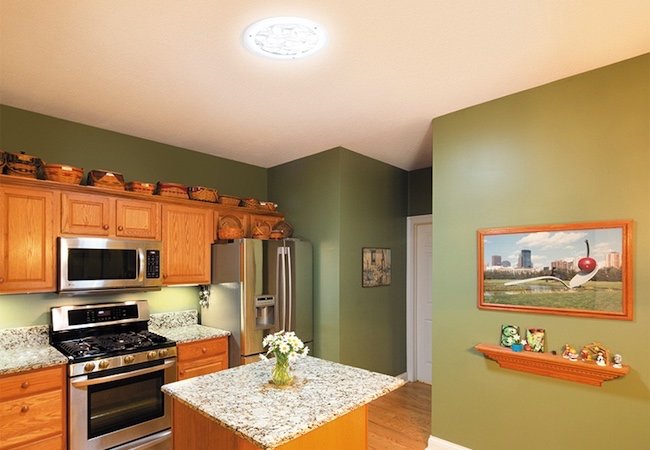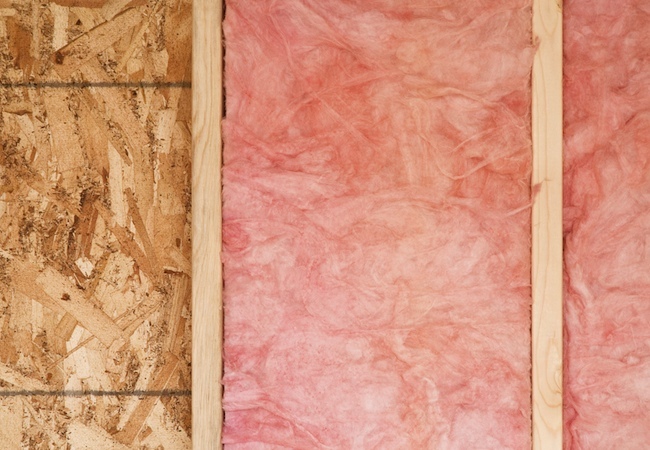We may earn revenue from the products available on this page and participate in affiliate programs. Learn More ›
The hardest part of fixing a roof leak? A lot of times, it’s simply locating the problem. Sure, it’s easy enough to spot water stains on the ceiling or mold growth—sure signs of a leak. But once water has penetrated the roof, it’s easily diverted by such things as insulation. So even though you may notice the evidence of a leak in the corner bedroom, the vulnerable point in your roof may be quite far removed from that part of your house.
That’s why roof repair jobs typically begin with a certain amount of detective work. With these tips for how to find a roof leak, you can crack the case quickly and plug the leak before the damage gets any worse.
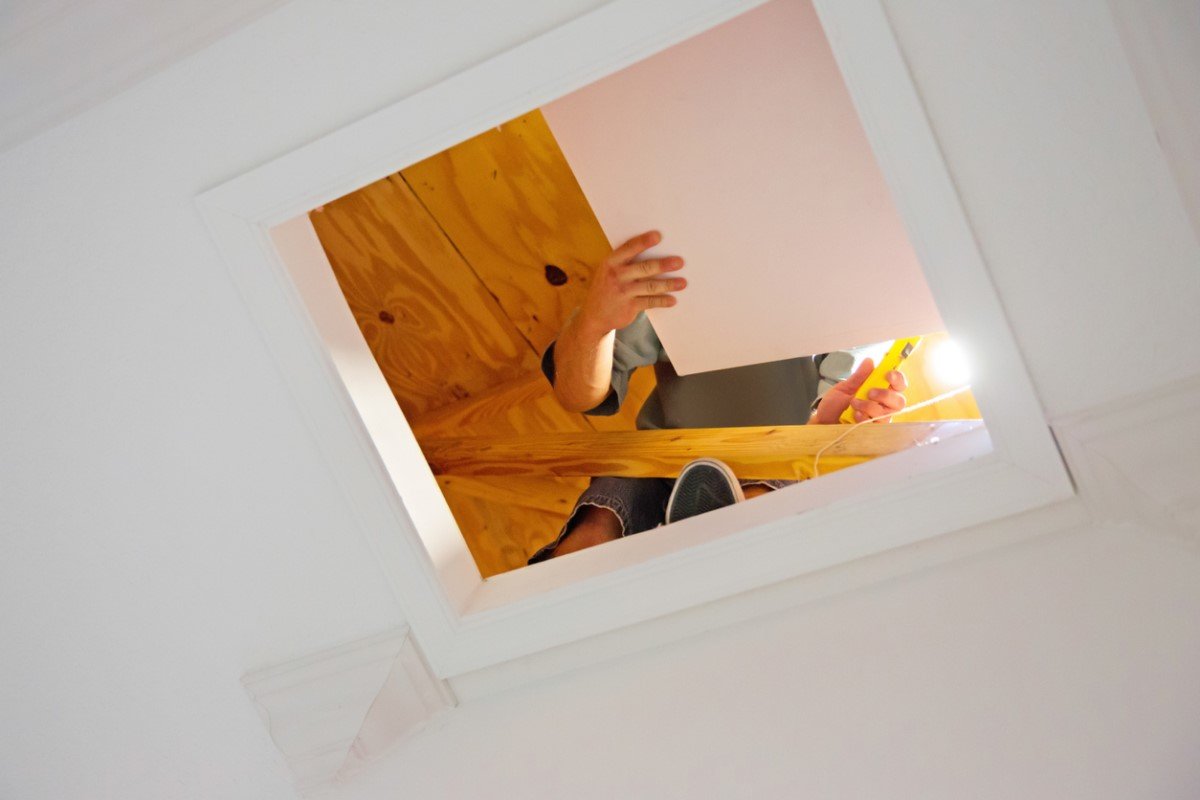
Head into the attic to get a good look at the underside of the roof.
Arm yourself with a flashlight and head up to the attic. Be careful up there: If there’s no proper flooring, step carefully from joist to joist. (If you step between the joists, you might put a foot through the ceiling of the room below!)
Once you’ve got your bearings, use the flashlight to examine the underside of the roof. Look out for any areas that are darker than the surrounding roof sheathing. If it hasn’t rained recently, moist spots may be too difficult to discern. Mold, on the other hand, has a tendency to linger. So if you encounter a patch of mold, which thrives on moisture, chances are you’ve found the vulnerable point in your roof.
Follow damaged insulation back to the source of the roof leak.
The underside of your roof may be obscured by insulation, and that’s actually helpful for finding the roof leak. Insulation deteriorates more noticeably and more quickly than wood does. If you’re seeing damage on one section of the insulation, however, you must remember that the leak itself may be several feet to either side because it diverted rainwater from the source of the leak.
It’s best to carefully remove all insulation adjacent to the spot where you notice signs of a leak. That way, you can follow the path of the water from the damaged area all the way to the water’s entry point in the roof. Remember that whenever you are working with insulation, it’s important to wear the appropriate protective gear.
Inspect the underside of the roof for objects that have pierced it or have been attached to it.
Most noticeable to the eye are leaks caused by an object (for example, an errant nail) that’s managed to pierce the roof. Failing any such obvious signs, check out the roof vents. If present, these vents are typically near ridges or gable ends, or both. Over time, the seals around vents can gradually weaken, allowing rainwater to seep in.
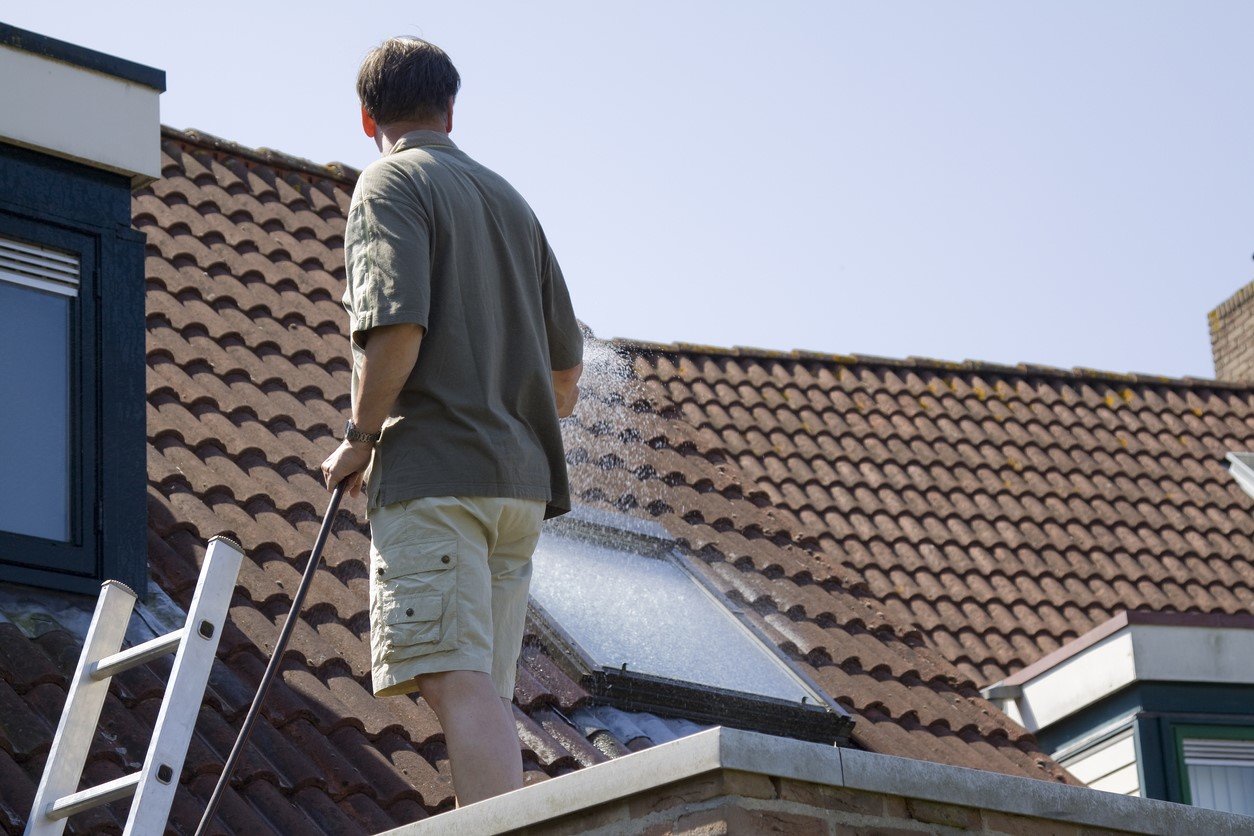
If dry weather prevents you from finding a roof leak, spray the roof with water from a garden hose.
What happens if you’re desperate to find a roof leak, but recent dry weather has made your search more challenging? Well, you can always simulate a storm. This method requires two people: While one person goes up on the roof, garden hose in tow, the other person remains in the attic with a flashlight in hand. Section by section, the person on the roof wets down the roof, while the other carefully examines the roof’s underside for leakage.
By simulating a downpour, you can witness firsthand how your roof withstands—or fails to withstand, as the case may be—conditions that mimic those of a natural storm.
Finally, start on your roof repair.
Leaks only get worse. Act quickly once you’ve pinpointed the location of yours. Fortunately, in many instances it takes only a modest roof repair to fix the leak—for example, replacing a shingle. If you don’t feel comfortable on the roof, however, or if the leak seems extensive, do not hesitate to contact a professional.


